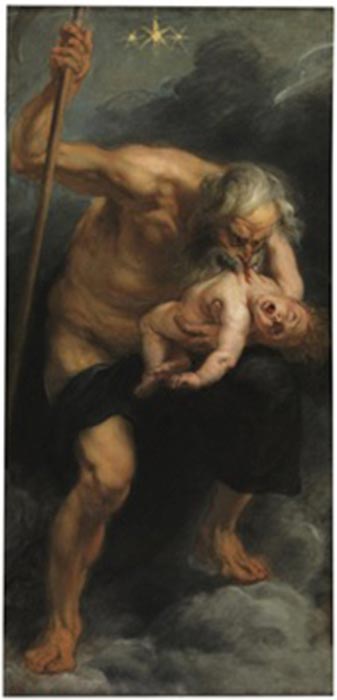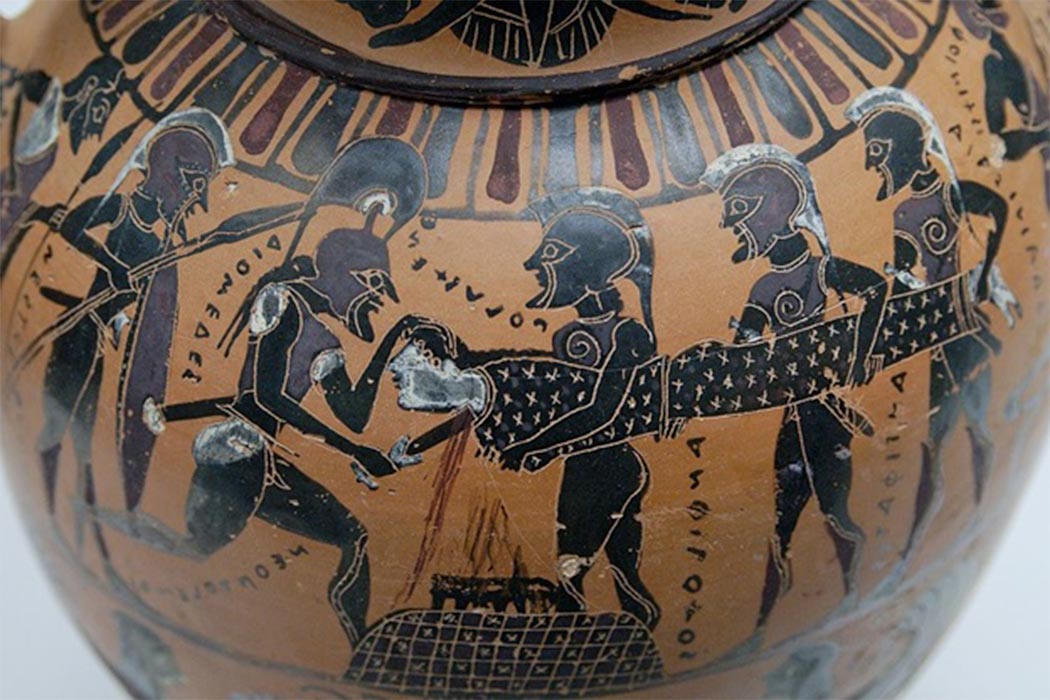
The Highest Altar: Human Sacrifice in Ancient Greece
In the Greek Peloponnese, high atop the summit on Arcadia’s Mount Lykaion (Wolf Mountain) lies an altar at one of the oldest and most revered of all primordial sanctuaries. Towering at nearly 5,000 feet (15 meters), with vistas of the entire Peloponnese peninsula below, it is easy to understand the intimacy the ancients must have felt towards the god of sky and thunder at this sacred site.

The Fall of the Titans by Cornelis Cornelisz van Haarlem (1596–1598) (Public Domain)
Weather God Zeus
Purportedly Zeus’ birthplace, experts now believe that the altar may predate Zeus by over 1,000 years, originally paying homage to a chthonic, more primal god. Indeed, Zeus’ birth atop Mount Lykaion may signify the very inception of ancient Greek religion itself. A weather-god, Zeus was entreated during times of scarcity, not infrequently high above the clouds on Mount Lykaion. In a land prone to drought, famine and a thousand injustices, carnivorous gods loomed large, ravenously roaming the earth in search of sacrificial victims. Zeus, one of the earliest gods of the Greek pantheon, was the most brutal and blood-thirsty amongst them.

Kronos devouring his son by Peter Paul Rubens (1636 - 1638) Museo del Prado (Public Domain)
Son of Kronos—infant-eating chief of the primordial Titans—Zeus was king of the Olympian pantheon, dictatorial god of sky and thunder and sanctioned serial rapist whose fierce role in Greek mythology is cardinal. In order to appease his ever-capricious appetite, blood lust was the order of the day and sacrifice, his exacting requirement. At the hallowed ground of his circular ash altar possibly tens of thousands of creatures were sacrificed in his honor. The animals—typically sheep and goat and to a lesser extent pigs and cattle—were lined up to offer their lives to the sky god.
Lycaion’s Human Sacrifice
But were there more than animals queued up on Zeus’s altar? If the ancients are to be believed, Arcadians were known to gift human boys to the sky god as well. Dismissing such reports as ancient hyperbole, human sacrifice in ancient Greece has been mostly disregarded by academia. But that may be changing. Much to the astonishment of archaeologists recently excavating the area, hidden amongst the thousands of animal remains on Zeus’ altar was the 3,000-year-old skeleton of an adolescent boy believed to have been sacrificed in much the same way as his bestial counterparts.
- Skeleton 3,000 years old lends credence to claims of Ancient Greeks sacrificing humans
- Why Did Early Human Societies Practice Violent Human Sacrifice?
- Dismembered Remains Tell Horrifying Tale of Ritual Human Sacrifice in Ancient Crete
While excavating Mount Lykaion in 2016, University of Arizona archaeologist David Gilman Romano and his team discovered the young boy’s remains. Gilman Romano asserts: “The one thing that is clearest is that we are not digging a cemetery. This is a sacrificial altar to Zeus, where thousands of sacrifices were made in antiquity. And in the middle of it, right in the middle, we found a human skeleton.” Because the resting place of the boy was an altar where sacrifices were made, his remains beg the question, did ancient Greeks practice human sacrifice?





